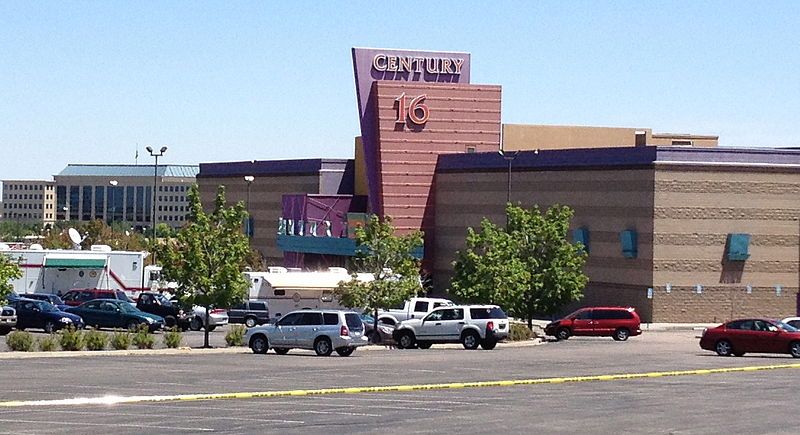It was an unthinkable crime; on July 20, 2012, a 24-year-old neuroscience graduate student* walked into a movie theatre in Aurora, Colo., and began shooting people he had never before seen. Twelve people died and 70 were wounded in this calculated and intricately planned massacre that challenged everything we know about the intersection of mental illness and evil.
So much has been written about mass shooters as we’ve struggled to understand what motivates someone to kill strangers in a public place. The hope is that if we can understand it, then we can prevent it. The topic has been one of great interest to me because it gets quickly linked to advocacy for involuntary psychiatric care: Half of mass murderers suffer from psychiatric disorders and if we could force them to get treatment, then we could prevent these horrific events.
Many mass shooters die at the scene. Not only did the Aurora shooter survive, but his case went to trial – also a rarity – providing insights we have not had with other similar cases. With information gained through this court case comes “A Dark Night In Aurora” (Skyhorse Press, 2018), a careful dissection of the Aurora shooter by William H. Reid, MD, MPH. There are many books about crimes and criminals, but what caught my attention about this book was the author. Dr. Reid is one of five expert/forensic psychiatrists retained for the case and he was brought on by the judge as a second nonpartisan psychiatrist. Dr. Reid interviewed the defendant for more than 20 hours, he video-recorded the interviews, and he had access to, “... the existing seventy-five thousand pages of evidence, hundreds of audio and video files, and access to the defendants and scores of witnesses, experts, and others associated with the case ...” Dr. Reid notes that when the defendant placed his sanity in question, all confidentiality was waived.
In this case, the perpetrator had been treated by a therapist and two psychiatrists at his university counseling center in the semester before the shooting. There were video recordings of the defendant in his cell, a correctional psychiatrist in the local jail; psychiatric records from an admission to Denver Health Medical Center and two admissions to the Colorado Health Institute at Pueblo (a secure, forensic setting); and neuropsychological testing done by psychologists hired for the case. In all, there was a lot of mental health data, and I’m not aware of any other book that has been written by a psychiatrist about a criminal case where the author testified in the case.
Let me start by saying that the book is well written, very readable, and fascinating. I’d followed parts of the case in the news and had even watched some of the trial being live-streamed, so not all of the information was new, but Dr. Reid has put together the many facts of a perplexing case together in a cohesive way. There’s no literary descriptions or flowery writing; Dr. Reid is a focused writer. He also does a good job of explaining the specifics of Colorado state law to the forensic aspects of the case. In the end, there were nuances of how the shooter came to be found both competent and sane but was spared the death penalty by a single vote. Overall, I found the book haunting, and it would have been a more comfortable read if it were fiction. There was something terribly disconcerting about following along this miserable journey, all the while knowing that the killer ultimately would destroy so many lives and then watching his disconnected existence after the massacre.
As a general adult psychiatrist, I wanted to learn something very specific from this book: What is the recipe for creating a mass murderer and what are the warning signs a psychiatrist should catch? I would like my career to be free of patients who kill. The Aurora shooter’s family life sounded fairly pedestrian. His parents are professionals; there was a boy and a girl in an intact family with attentive parents, and no findings of abuse, torture, neglect, bullying, or anything out of the ordinary.
As a child, the shooter was noted for his kindness, and he was particularly caring toward his younger sister. As he grew older, reports about his personality were conflicting: Some saw him as awkward, and later even as odd, while others described him as normal, especially within a cohort of studious kids. He played on sports teams, was an excellent student, liked nonviolent video games, and while he was not outgoing, he always had some friends, though he shunned them during the semester before the shooting. He was not comfortable with women, but he had one girlfriend in graduate school, and when that relationship broke up, he texted with another classmate about how “hot” she was and that they went hiking together. The breakup may have contributed to the shooter’s unraveling, but if it did, Dr. Reid did not present this as the precipitant, and many young men are awkward with women – and endure breakups and rejection.
While the media said the shooter failed out of school, this was not the case. He did well in his classes but chose not to study for an important oral exam while he devoted his time to gathering weapons for his mission to kill, planning out the details, learning to use firearms, and rigging up a complex explosive system around his apartment. When he failed the oral exam, he was told he could study and retake it in a few weeks. He chose, instead, to withdraw from graduate school.


